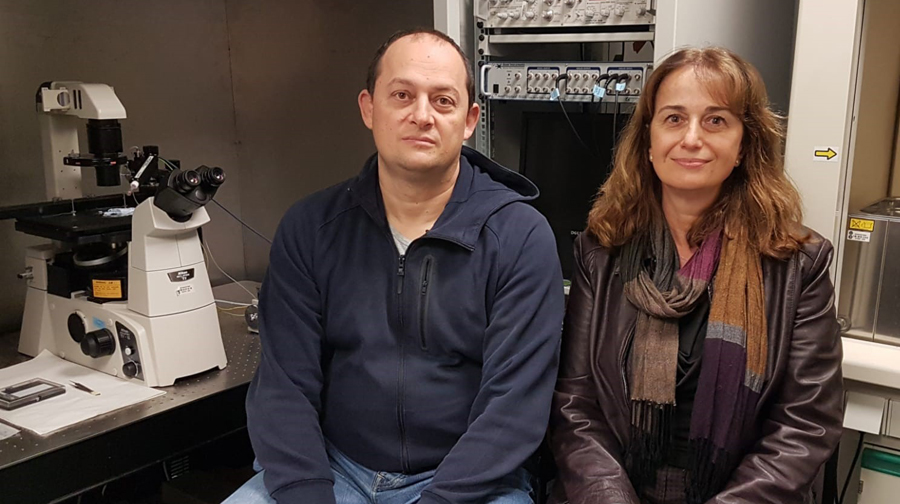First gene therapy approach for MLC granted orphan drug designation
The first gene therapy approach for megalencephalic leukoencephalopathy with subcortical cysts (MLC), developed by a team co-led by the research group in gene therapy directed by Assumpció Bosch at the UAB, has been granted Orphan Drug Designation by the European Medicines Agency. The therapy reduces the symptomatology of this extremely rare genetic disease in the preclinical phase in mouse models of MLC. The designation as an orphan drug will allow to continue the clinical research process with the final objective of obtaining marketing authorisation.

The first gene therapy approach for the treatment of megalencephalic leukoencephalopathy with subcortical cysts (MLC) has been granted the status of orphan medicine by the European Medicines Agency (EMA). Researchers in charge of the project achieved to reduce the symptomatology of this rare disease in preclinical mouse models.
The designation as orphan drug, promoted by the Centro de Investigación Biomédica en Red de Enfermedades Raras (CIBERER), is the result of the research project led by the gene therapy research group directed by Assumpció Bosch, professor of the Department of Biochemistry and Molecular Biology at the Universitat Autònoma de Barcelona (UAB), alongside the group directed by Raúl Estévez from CIBERER at the University of Barcelona (UB) and the Bellvitge Biomedical Research Institute (IDIBELL). Participating in the development of the project were also researchers from the Vall d’Hebron Institut of Research (VHIR) and the Catalan Institution for Research and Advanced Studies (ICREA).
So far, there is only supportive treatment, but no curative therapy, for patients with MLC, a monogenic disorder characterised by megalencephaly, loss of motor functions, epilepsy, and moderate mental retardation caused by a mutation in different genes. “In the majority of cases, the disease is produced by mutations in the MLC1 gene”, explains Raúl Estévez, expert in the molecular mechanisms of the disease and also member of the UB Institute for Neurosciences.
In brain biopsies of patients with MLC, the accumulation of water in the form of vacuoles has been observed in myelin (the insulating layer that forms around the nerves) and in astrocytes (basic cells for the maintenance of neuronal function) surrounding the blood vessels.
Researchers were able to improve the symptomatology of the MLC disease in the preclinical phase using a mouse model with the inactivated MLC1 gene. They prepared adeno-associated viruses that express Mlc1 and which include the promoter for the GFAP protein, which allows expression of the corrected gene in MLC1-expressing cells. Subsequently, they were injected into the subarachnoid space of the cerebellum of the mouse model as an effective route of administration.
“This research is the first therapeutic approach that has been developed for MLC and could also have implications for the treatment of other diseases that affect motor functions, such as ataxias”, points out Assumpció Bosch, UAB lecturer and expert in gene therapy.
Now, once the designation has been obtained, the drug must continue with the clinical research process to establish its safety, efficacy and quality profile, with the aim of finally obtaining the marketing authorization from the regulatory authorities.
About MLC leukodystrophy
Megalencephalic leukoencephalopathy with subcortical cysts (MLC) is a form of leukodystrophy characterised by childhood-onset macrocephaly, often with mild neurological symptoms at presentation (such as mild motor retardation), which worsen over time, leading to a gait disorder, falls, ataxia, spasticity, seizures of increasing frequency and intensity, and cognitive impairment. Brain MRI images show diffuse involvement and slight inflammation of the white matter, as well as subcortical cysts in the anterior temporal and frontoparietal regions.
The estimated prevalence of MLC in the European population is around 1 case per every 10,000 people, i.e., it is considered to be an extremely rare disease (defined as a disease affecting fewere than 1 in 2,000 people).
Benefits of being designated an orphan drug
Thanks to this new designation, the CIBERER has already promoted 12 EMA-designated orphan drugs, four of which were also granted this designation by the American Food and Drug Administration (FDA). Five of these medicines correspond to gene therapies and the other seven are repurposed drugs, ones that were already used to fight other pathologies and are being evaluated for their use in the treatment of rare diseases.
The orphan drug designation granted by the EMA represents advantages such as being able to receive a 10-year marketing authorisation, during which no similar products can be commercialised. Another advantage is having assistance protocols and free or reduced-cost scientific advice, as well as being exempt from paying for the designation. Finally, the entities developing orphan drugs have access to specific European Union grants and member state programmes.